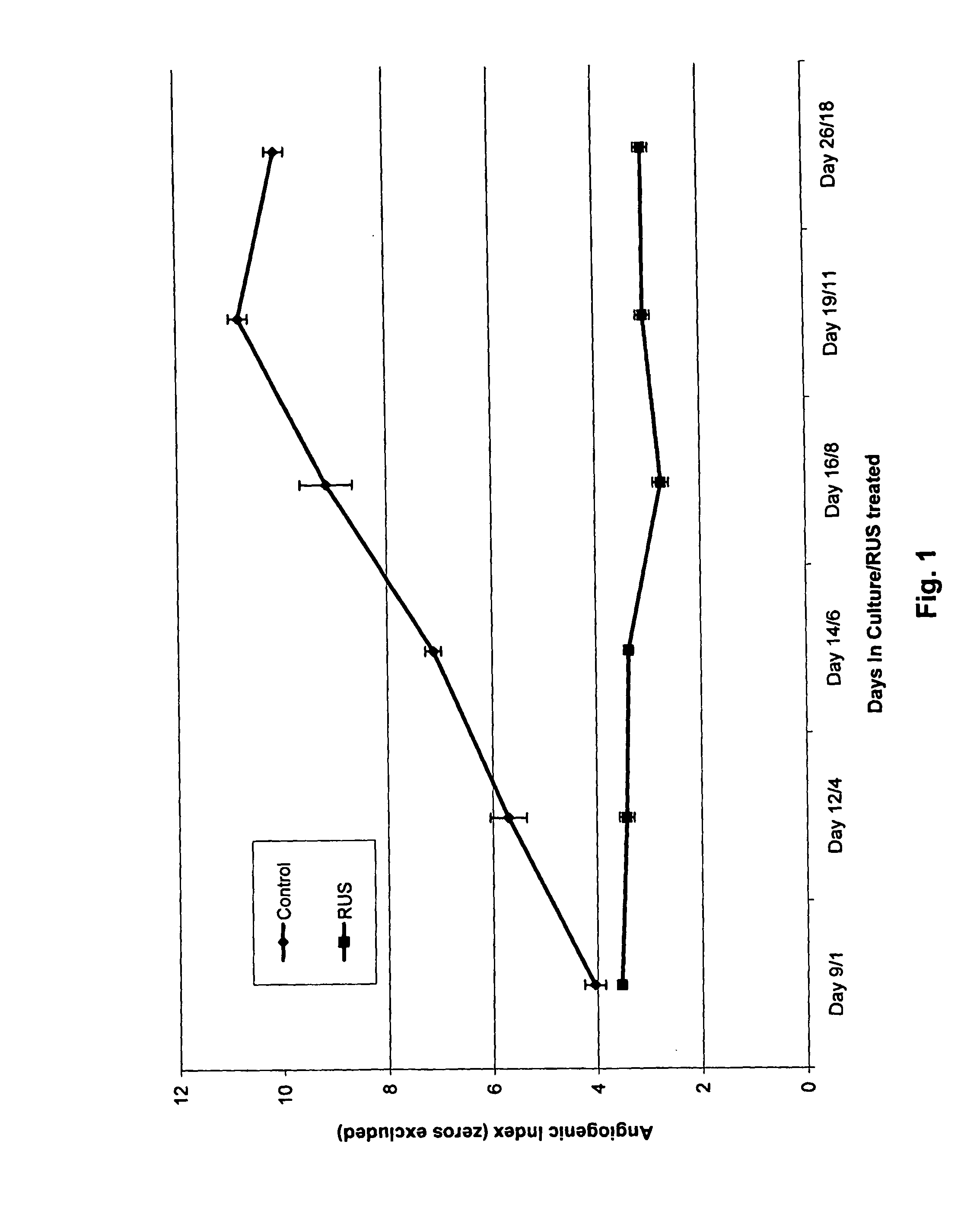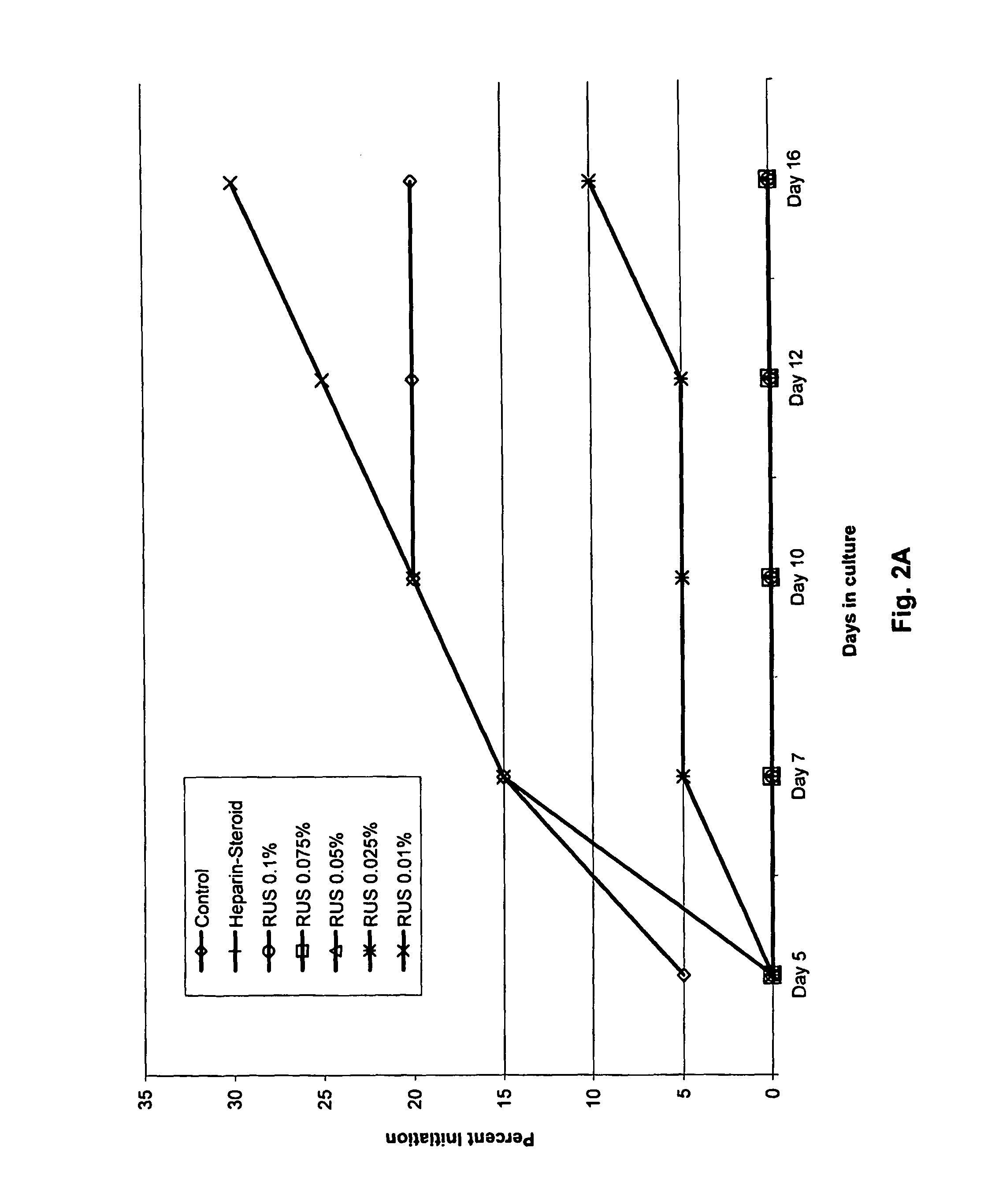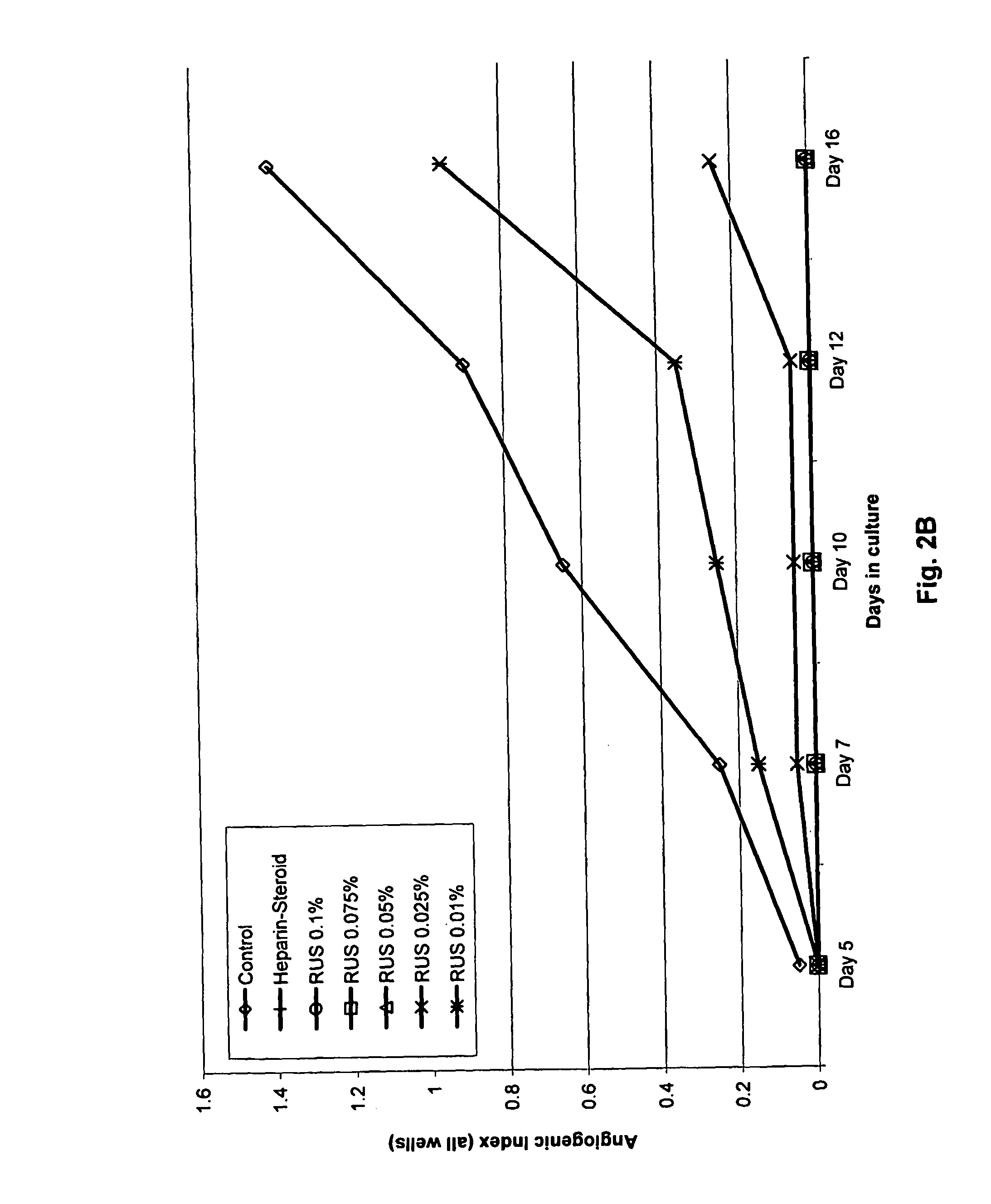Angiogenic agents from plant extracts, gallic acid, and derivatives
a technology of gallic acid and angiogenesis, which is applied in the direction of depsipeptides, peptide/protein ingredients, plant/algae/fungi/lichens ingredients, etc., can solve the problems of regression of tumors, difficult to distinguish between angiogenesis and other systems affecting a developing tumor, and abnormal angiogenesis, etc., to inhibit angiogenesis, inhibit angiogenesis, and inhibit angiogenesis
- Summary
- Abstract
- Description
- Claims
- Application Information
AI Technical Summary
Problems solved by technology
Method used
Image
Examples
example 1
[0090]Materials and Methods for Angiogenesis Assay
[0091]The Human Placental Vein Angiogenesis Model: Discarded human placentas were obtained anonymously with prior approval of an Institutional Review Board. The placental veins were dissected free from the placenta and adventitial tissue. The trimmed vein segment was opened longitudinally to produce a flat film of venous tissue of full thickness. Vein discs (2 mm diameter) were created with a sterile skin punch (Miltex Instrument Company, Inc.; Lake Success, N.Y.). The discs were placed into wells of a standard 96-well plate (Corning Inc., Corning, N.Y.). The vein disc harvest was completed within three hours of delivery to optimize endothelial cell viability. Vein discs from a single placenta were distributed equally among all treatment groups to ensure randomization. Each well was preloaded with a human thrombin solution (0.05 IU in 2.0 μl), and allowed to evaporate to dryness before use. All chemicals were purchased from Sigma Che...
example 2
[0097]Rubus suavissimus Extractions Assay
[0098]RUS Extract: The leaves of Rubus suavissimus, Chinese blackberry, were collected from Guangxi, People's Republic of China. The leaves were air-dried and stored at room temperature before extraction. One hundred grams of dried leaves were soaked in 2 L tap water for 1 hr and then brought to a boil two times for 30 min each. The mixture was then filtered with cheesecloth and spray dried to obtain 31 g crude extract powder, the “RUS” extract.
[0099]Treatments and Fractionation of the RUS Extract
[0100]RUS-A Extract: The crude extract RUS was re-constituted with deionized water and subjected to five consecutive freeze-thaw cycles to yield “RUS-A” extract.
[0101]RUS-B Extract: Crude extract RUS was re-constituted with deionized water and boiled for 20 min to yield “RUS-B” extract.
[0102]RUS-C and RUS-D Extracts: Crude extract RUS was re-constituted with deionized water, and mixed with 20% trichloroacetic acid (TCA) at a 1:1 v / v ratio and 0.1 ml ...
example 3
[0105]Gallic Acid Extraction and Source
[0106]Source of Gallic Acid: Gallic acid was isolated and purified as described below from aqueous Chinese blackberry extract prepared from air-dried leaves purchased from Guangxi Botanical Garden, Nanning and Guangxi Normal University S&T New Tech Company, Guilin, China. Gallic acid, methyl gallate, ethyl gallate, propyl gallate, butyl gallate, lauryl gallate, octyl gallate, ellagic acid, BUSMUTH-gallate were purchased from Sigma Chemical Company (St. Louis, Mo.).
[0107]Extraction of Gallic Acid from Chinese Blackberry
[0108]Fraction RUS-F11 as isolated in Example 2 was further purified by dissolving in 50% methanol and again loading on a Sephadex LH-20 column. This purification step was done twice and yielded a pure compound, initially labeled “RUSF260.” RUSF260 was shown to be gallic acid by several methods. The chemical structure of RUSF260 was elucidated in CD3OD carrier solvent on a Bruker DPX400 MHz Nuclear Magnetic Resonance Spectrometer ...
PUM
| Property | Measurement | Unit |
|---|---|---|
| molecular weight | aaaaa | aaaaa |
| diameter | aaaaa | aaaaa |
| size | aaaaa | aaaaa |
Abstract
Description
Claims
Application Information
 Login to View More
Login to View More - R&D
- Intellectual Property
- Life Sciences
- Materials
- Tech Scout
- Unparalleled Data Quality
- Higher Quality Content
- 60% Fewer Hallucinations
Browse by: Latest US Patents, China's latest patents, Technical Efficacy Thesaurus, Application Domain, Technology Topic, Popular Technical Reports.
© 2025 PatSnap. All rights reserved.Legal|Privacy policy|Modern Slavery Act Transparency Statement|Sitemap|About US| Contact US: help@patsnap.com



